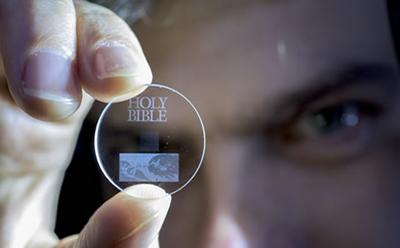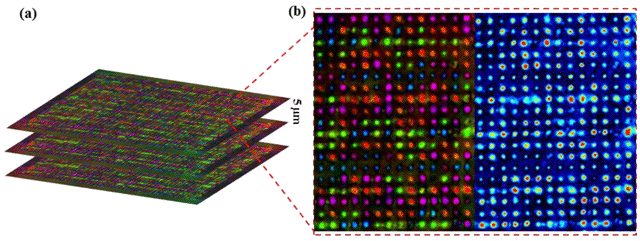Quartz carrier capable of storing large amounts of data for billions of years goes to the masses
 Scientists from the University of Southampton have developed a new type of information carrier. This drive can store data for billions of years without being destroyed. The material is a nanostructured quartz glass, for which the writing process and the data reading mechanism are developed. A femtosecond laser is used, recording information in 5D mode.
Scientists from the University of Southampton have developed a new type of information carrier. This drive can store data for billions of years without being destroyed. The material is a nanostructured quartz glass, for which the writing process and the data reading mechanism are developed. A femtosecond laser is used, recording information in 5D mode.About 360 terabytes of data is placed on one small disk. The material remains stable at temperatures up to 1000 ° C, and at room temperature it can exist almost forever. At a temperature of 190 ° C, the material's lifespan is billions of years (13 billion). At the same time, all the placed information remains intact, while the disk itself remains intact.
The recording is performed using a femtosecond laser with a wavelength of 1030 nm, pulses of 8 microjoules with a duration of 280 femtoseconds with a frequency of 200 kHz, by burning points in the crystal, layers at a distance of 5 μm from each other (1 micrometer - one million-meter) at a depth of 140 um from the surface of quartz glass.

')
Scorched nanostructures change the polarization of the light passing through the glass. Thus, information can be read using an optical microscope and a polarizer.
The technology was first demonstrated in 2013, when a 300-KB document was saved to disk, and then successfully read. Now the Universal Declaration of Human Rights, Newtonian optics, Magna Carta, Bible are also recorded. Books written in this way will be able to survive all people on Earth. Technology refined and improved.
This type of media can be useful for organizations that have to manage huge amounts of data. For example, it can be museums, libraries, industrial enterprises. “It's amazing to even think that we have created a technology that allows you to save documents and other information for future generations. This technology can save everything we have learned, ”says Professor Peter Kazansky, the head of the project.
This week, developers will publish all the details of the project. Currently, a study is underway on the possibility of a new type of commercial use of storage media, for which developers are negotiating with large technology corporations.
Source: https://habr.com/ru/post/390695/
All Articles